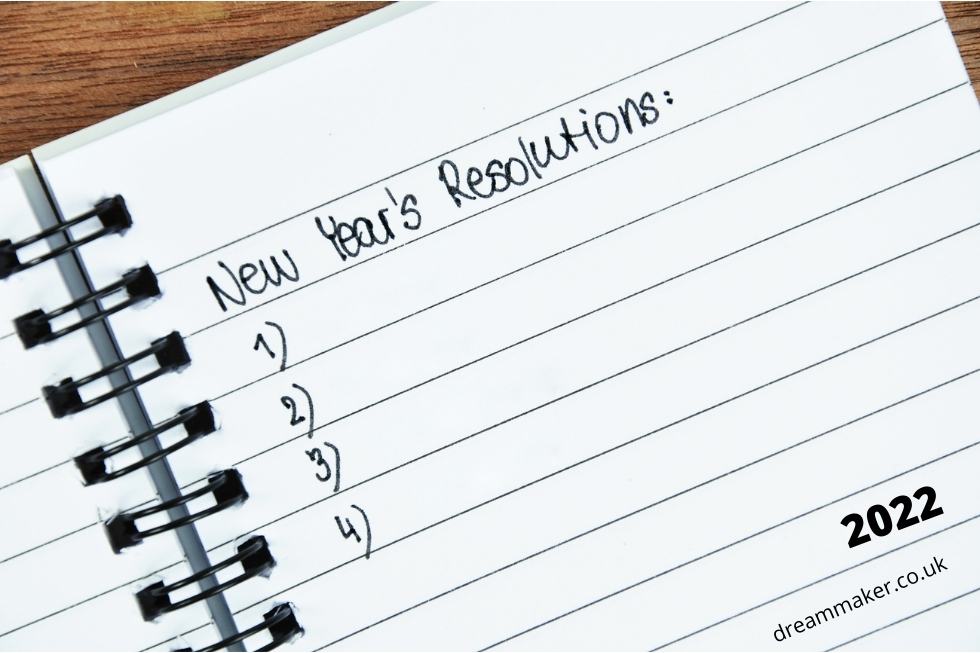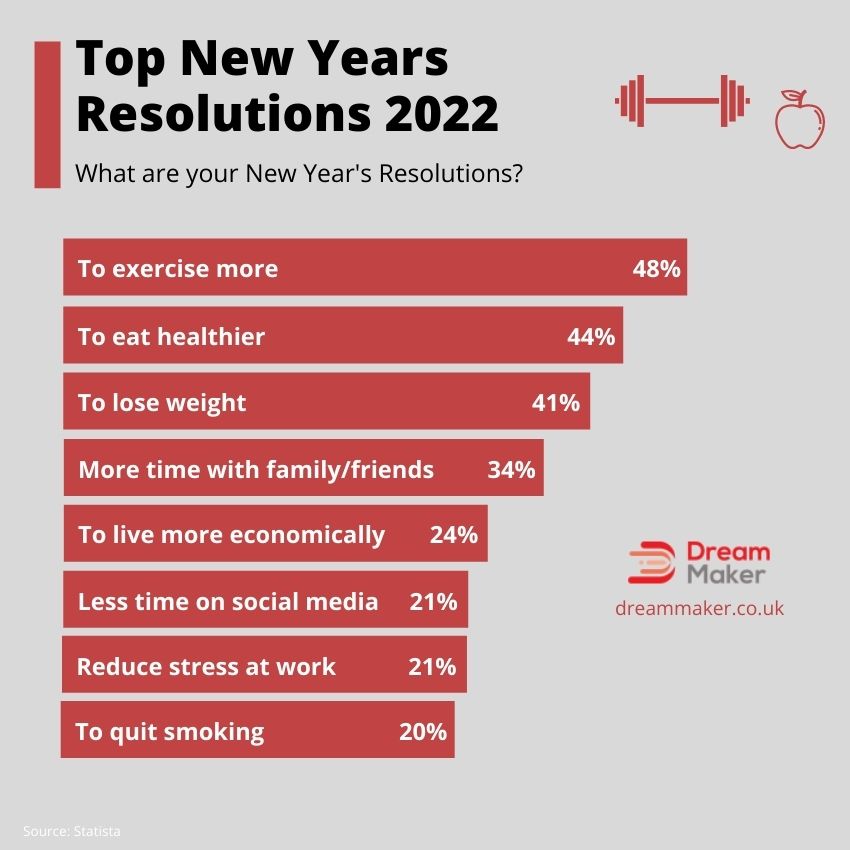
People worldwide make New Year’s resolutions every year to achieve their objectives, improve their health, and better their lives.
A certain percentage of people can keep their promises, while others fail.
In this post, you’ll learn about the outcomes and failures of New Year’s resolutions Statistics, as well as a breakdown of various pledges made throughout history.
You’ll also find interesting facts and statistics from research suggesting how to be successful in 2022 and how to achieve your goals.
Table of Contents
New Year’s Resolutions Statistics

Success and Failure Statistics
At the end of six months, you can see how many people achieved their goals and how many did not.
- After one week, 75 percent of those who make a New Year’s resolution are still successful in keeping it.
- The percentage of bacteria falls to 71% after two weeks.
- After one month, the proportion of people affected by erectile dysfunction falls to 64%.
- After six months, 46 percent of those who resolve are still successful in keeping it.
- Only 4% of those who have similar objectives but do not make a resolution are still successful after six months, while of those with distinct goals but no resolve, just 3% are.
Overall success/failure rates
- According to 2016 research, only 9% of Americans who make New Year’s resolutions at the end of the year feel they successfully keep them.
- A greater proportion of successful New Year’s resolution-makers (11%) than unsuccessful ones (8%) were able to implement those goals in the survey by Riddell. In the same year, the researchers discovered that 12% of people who set resolutions were effective, even though half of the participants were certain they would succeed at first.
Reasons for failure
- Almost half of those who failed to keep their New Year’s resolutions said they had unattainable objectives in one research from 2014.
- A lack of organization also brings on failure. According to a 2013 study in Edge, 42% percent of participants who failed didn’t keep track of their development.
- The majority of us (23 percent) made specific intentions or policies for the new year but forgot about them.
- One in ten individuals who failed said they had made far too many vows.
The Most Popular Resolutions
- In 2022, one of the most popular New Year’s resolutions is to eat healthier – 44 percent of U.K. respondents, 44 percent of Polish participants, and 43% of Americans.
- In 2019, according to one poll, more than half of Americans (59%) wanted to be healthier – 54% said they would eat better, and 48% intended on losing weight.
- Most Americans intended to kick off the New Year by saving money (53% in 2018) and getting in shape (45%).
- In a 2018 poll, only 16% of respondents planned to give up smoking, formerly the most popular New Year’s resolution.
- According to a report from the University of Stockholm, over 70% of participants in a 2017 study had made one or more physical health-related vows. The second most popular answer was “self-improvement” (10%), followed by “psychological health” (5%).
- According to the U.S. government, over half of the most popular resolutions made each year are health-related.
- Losing weight and quitting smoking were the most popular health-related goals in 2014, followed by eating healthier meals, getting fit, managing stress, and drinking less alcohol.
- In 2000, a study from Finland revealed that twice as many serious attempts to quit smoking occurred in January instead of other months.
- In 1998, 51 percent of Americans vowed to eat more fruits and vegetables, 67% planned to exercise more frequently, 61% intended to consume healthier meals, 58% desired to lower their stress level, 49% wanted to eat less fat, and 48% resolved to lose weight.
New year’s resolutions Statistics 2022
- Of the top-voted inquiries, 45% of respondents said they would make New Year’s resolutions for 2022, while 19% are undecided.
- The most popular goals for 2022 are to exercise more and get in better health (50 percent of participants), reduce weight (48%), save money (44%), and improve your diet (39%).
- Of those who made a goal in 2020, 35% kept all of their promises, 49% kept some of theirs, and 16% failed to keep any.
New year’s resolutions Statistics 2020
- The majority of respondents, only 27% of them, made any goals for 2022.
- Overall, the most popular New Year’s resolutions for 2020 are to exercise more (50%), save money (49%), and eat healthier (43%).
- Participants kept some of the same goals from 2019 and made some new ones. The majority (64%) maintained at least one of their previous declarations.
Generational Statistics
- Being overweight is a major concern for boomers (53%), but they place less emphasis on saving money than younger generations (39%).
- Gen Z is four times more concerned with finding love than other generations.
- Generation Z is the most interested in improving their style and dressing better.
- In 2020, West Coast Millennials were most concerned with obtaining a career advancement or raise.
- According to one survey, Millenials are the most confident in keeping all of their goals (39%).
Regional Statistics
- Those in the Midwest place a higher value on weight loss than those in any other U.S. area, whereas exercising is more important for those from the West Coast vs. the rest of America.
- The southern states value drinking less than any other region, although the Northeast has a greater proportion of individuals who wish to quit drinking alcohol altogether.
- In the Northeast, people are almost twice as likely to volunteer in their community.
New year’s resolutions Statistics 2019
- The number of people who kept all their New Year’s resolutions in 2019 was 8.9 percent, compared to 19 percent in 2018.
- Over a year, less than half (47.1%) of the people who made New Year’s resolutions kept them for more than 14 days.
- The majority of individuals (57%) did not make a New Year’s resolution for 2019.
- The most common New Year’s resolutions, according to a recent poll, were to exercise more (59%), eat healthier (54%), save money (51%), and lose weight (48%).
Generational Statistics
- Millennials were the most confident (37%) in keeping all of their resolutions, followed by Gen Xers at 32%, Boomers at 30%, and Silents at 22%.
- On the other hand, Millennials were the most successful generation, with 12% keeping all of their New Year’s resolutions.
- According to the poll, only 2% of the Baby Boomers kept all their promises.
Location Statistics
- The most common resolution keepers were city dwellers (10%) and rural people (4%).
Participant Opinion
- According to almost half of all respondents, New Year’s resolutions are pointless.
- The majority of people in the study said that making goals had improved their lives, with 22% noting that writing them down has aided them to improve.
How to Keep a New Year’s Resolution

1. Develop the needed persistence mindset ahead of time.
Numerous research studies have linked self-efficacy and a desire to alter to favorable outcomes for those who made New Year’s resolutions.
The capacity to adapt was also crucial.
Social support and behavioral skills, on the other hand, were not associated with a successful result.
In one research, men were 22% more likely to succeed in their goals when they set them in terms of small and measurable objectives such as “lose 1 pound each week” rather than “lose weight.”
2. Ask a question instead of making a declaration.
The “question-behavior effect” is a psychological phenomenon in which asking people to complete a certain action influences whether they subsequently perform it. After being questioned, the influence has been demonstrated to endure for more than six months.
For individuals making New Year’s resolutions, a question such as, “Will I exercise – yes or no?” may work better than a declarative statement like, “I will exercise.”
3. Get plenty of sleep.
According to sleep expert and neurologist Cathy Goldstein, M.D., lack of sleep is a major reason most people’s New Year’s resolutions fail (or succeed).
A lack of sleep reduces leptin, the hormone that makes you feel full, making it difficult to lose weight or eat healthier. It also increases ghrelin, known as the “hunger hormone,” which stimulates hunger, encourages fat accumulation, and leads to poor food choices.
Researchers have discovered that getting enough sleep improves speed, strength, and endurance for athletes with fitness objectives.
A lack of sleep affects one’s productivity and may lead to lower job performance or promotion. Sleep deprivation also makes management roles less ethical and less alert, motivated, and happy.
A lack of sleep can reduce mood and interpersonal difficulties for individuals who want to enhance their social life.
A lack of sleep is linked to higher rates of nicotine addiction for those wanting to quit smoking.
4. Change your timing.
Don’t wait for the new year to make a New Year’s resolution. According to Bas Verplanken, a social psychology professor at the University of Bath, the success of a habit change resolution may be contingent on finding the ideal moment to implement it.
Verplanken has been researching the discontinuity effect, which shows that habits are more readily altered when the surrounding circumstances that encourage them, such as location or context, are altered.
Embed the positive change you want in other changes, such as relocating to a new house where your daily routines around commuting, energy use, and shopping will all be changing.
Conclusion
Don’t be scared of making a New Year’s resolution because of the statistically high failure rate. Using the methods outlined in this post, you can succeed. Even if you don’t achieve your goal, at the very least, you’ll be closer to it than you were at the start of the year by learning from your mistakes, and even if it doesn’t work out.
Statistics for this article were gathered from

Petri Maatta is a photographer, filmmaker, and webdesigner who has been working for over 20 years in the creative industry. Fascinated by manifesting for business reasons, Petri was determined to find out what it took to create success. He started his career with seven years of business failures before he found success by learning about manifesting from a mentor with a Fortune 500 company. Today Petri shares his knowledge through DreamMaker courses designed to help people change their businesses and lives while living on their terms.
STAY IN THE LOOP
Subscribe to our free newsletter.
Stay up to date! Get all the latest & greatest posts delivered straight to your inbox


